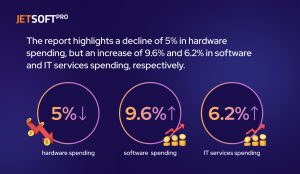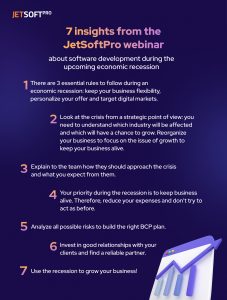A recession is a significant decline in economic activity that lasts for a prolonged period, typically spanning at least six months. During a recession, there is a contraction in the overall economy, marked by a decrease in the gross domestic product (GDP), rising unemployment rates, and a decrease in consumer spending.
The impact of a recession on businesses can be significant. Consumer spending tends to decrease during a recession as people become more cautious with their money, which can lead to a decrease in demand for certain products and services. Businesses may also face decreased access to credit or capital, making it more difficult to fund operations or investments.
Additionally, a recession can lead to increased competition as companies fight for a smaller pool of customers and revenue. This can drive down prices and profit margins, making it harder for businesses to stay afloat. As a result, many businesses may need to adapt their strategies or find new ways to generate revenue in order to survive and grow during a recession.
During a recession, some businesses tend to thrive due to changes in consumer behavior and economic circumstances. An industry or business can be considered recession-proof when it is able to maintain stable or growing revenue and profitability during a recession, despite economic downturns.

Finding growth opportunities during a recession involves identifying ways to adapt your business to the current economic environment and capitalize on emerging trends and needs. While a recession can pose challenges for businesses, it can also create opportunities for innovation, cost-cutting, and market disruption. By proactively seeking out opportunities for growth and staying nimble in response to changing circumstances, businesses can position themselves for success despite a challenging economic climate.
The Potential of Digitalization and High Technologies During a Recession
The COVID-19 pandemic has brought about an unprecedented disruption to the global economy. As businesses struggle to navigate through these uncertain times, many are turning to digitalization and high technologies to help them stay afloat. In this article, we will explore how the pandemic has accelerated digital transformation across industries, how high technologies such as AI and machine learning can help businesses streamline operations and cut costs, and provide examples of companies that have successfully leveraged digitalization and high technologies to thrive during a recession.
As the pandemic spread rapidly across the world, governments and businesses alike were forced to adopt new ways of working and communicating. Remote work became the norm, and businesses had to find ways to deliver products and services digitally. As a result, the pandemic has accelerated the adoption of digital technologies across industries.
For example, in the healthcare industry, telemedicine has become increasingly popular, allowing doctors to provide virtual consultations with patients. In the retail industry, many brick-and-mortar stores have had to shift their focus to e-commerce to continue generating revenue. The education sector has also seen a shift towards online learning, with many schools and universities offering virtual classes.

High technologies, such as artificial intelligence (AI) and machine learning, have the potential to transform businesses in a recession. AI and machine learning can help businesses streamline operations and cut costs by automating repetitive tasks and providing insights into customer behavior and market trends.
For example, in the finance industry, AI-powered chatbots can help customers with routine queries, freeing up staff to focus on more complex tasks. In the logistics industry, machine learning algorithms can help optimize supply chain operations, reducing costs and increasing efficiency. AI and machine learning can also help businesses identify and respond to changes in consumer behavior and market trends, helping them stay competitive in a recession
Several companies have successfully leveraged digitalization and high technologies to thrive during a recession. One such example is Amazon, which has seen a surge in demand for its e-commerce and cloud computing services during the pandemic. Amazon’s use of high technologies, such as machine learning algorithms, has helped it optimize its supply chain and improve the efficiency of its operations.
Another example is Zoom, which has experienced explosive growth during the pandemic due to the increase in remote work and virtual meetings. Zoom’s use of AI-powered features, such as virtual backgrounds and noise suppression, has helped it stand out in a crowded market.
How to Identify Opportunities for Growth
In today’s rapidly changing business environment, it’s essential for companies to stay on top of industry trends and market conditions to identify opportunities for growth. In this article, we will discuss the importance of staying up-to-date on industry trends and market conditions, how to conduct market research to identify areas of potential growth and innovation, and provide tips for monitoring competitors and keeping an eye on emerging technologies.
To ensure that you do not miss out on opportunities and remain competitive in the market, what you must do is:
- Staying Up-to-Date on Industry Trends and Market Conditions
Staying informed about industry trends and market conditions is vital to identifying opportunities for growth. This involves keeping up with the latest news, attending industry events and conferences, and networking with other professionals in the field. It’s also important to analyze data and statistics to gain insights into market trends and consumer behavior.
- Conducting Market Research to Identify Areas of Potential Growth and Innovation
Market research is a critical tool for identifying areas of potential growth and innovation. This involves collecting and analyzing data about customers, competitors, and market trends to gain insights into consumer behavior and preferences. Market research can be conducted through surveys, focus groups, and online analytics tools.
One effective approach to market research is the SWOT analysis. SWOT stands for Strengths, Weaknesses, Opportunities, and Threats. By conducting a SWOT analysis, companies can identify their strengths and weaknesses, as well as opportunities and threats in the market. This can help them develop strategies to capitalize on opportunities and mitigate risks.
- Monitoring Competitors and Emerging Technologies
Keeping an eye on competitors is another critical element of identifying opportunities for growth. This involves tracking their products, services, marketing strategies, and pricing. Analyzing competitor data can provide valuable insights into market trends and consumer behavior.
In addition, it’s important to keep an eye on emerging technologies that could disrupt the industry. This involves monitoring advancements in technology and understanding how they could impact the business. Companies that are able to adapt to emerging technologies will be better positioned to stay competitive and identify new opportunities for growth.
JetSoftPro’s CEO, Serhiy Kharytonov, shared 7 valuable pieces of advice during our recent webinar.

If you’d like to access additional insights from the webinar titled “Global Recession 2022-2024: how to survive – webinar for IT companies”, simply click here to view our webinar.
So, what businesses might grow during the recession?
As the world grapples with economic uncertainties brought on by recessions, businesses find themselves facing a multitude of challenges. However, not all industries and businesses are affected equally during these periods of economic downturn. Some businesses have managed not only to survive but even thrive during recessions.
Here are some types of businesses that may see growth during a recession:
- Discount Retailers: Consumers tend to cut back on spending during a recession, so discount retailers like Dollar Tree and Walmart tend to do well as people seek to save money.
- Healthcare: Healthcare is a recession-resistant industry as people will still require medical attention during an economic downturn. Also, with higher levels of stress, people may require more mental health services during a recession.
- Essential Services: Businesses that provide essential services such as grocery stores, utilities, and telecommunications are likely to remain stable or experience growth during a recession as these services are necessary regardless of the economic environment.
- Repair and Maintenance Services: Rather than replacing items, consumers may opt to repair or maintain them during a recession, leading to growth in businesses that provide such services.
- Education and Training: During a recession, many people may lose their jobs or be seeking to re-skill for a changing job market, leading to growth in education and training providers.
It is important to note that while these industries may see growth during a recession, not all businesses within these industries will experience success. The specific circumstances of each business, including factors such as management, financial stability, and market demand, will ultimately determine its success during a recession.
Conclusion
In conclusion, a recession is a challenging time for businesses, marked by a decrease in consumer spending, decreased access to credit, increased competition, and decreased profitability. However, it can also create opportunities for businesses to adapt their strategies and capitalize on emerging trends and needs. The COVID-19 pandemic has accelerated the adoption of digital technologies and high technologies, such as AI and machine learning, which can help businesses streamline operations, cut costs, and identify growth opportunities. Companies like Amazon and Zoom have successfully leveraged digitalization and high technologies to thrive during a recession. To stay competitive in the market and identify opportunities for growth, businesses must stay up-to-date on industry trends and market conditions, conduct market research to identify areas of potential growth and innovation and monitor competitors and emerging technologies. By proactively seeking out opportunities for growth and staying nimble in response to changing circumstances, businesses can position themselves for success despite a challenging economic climate.

